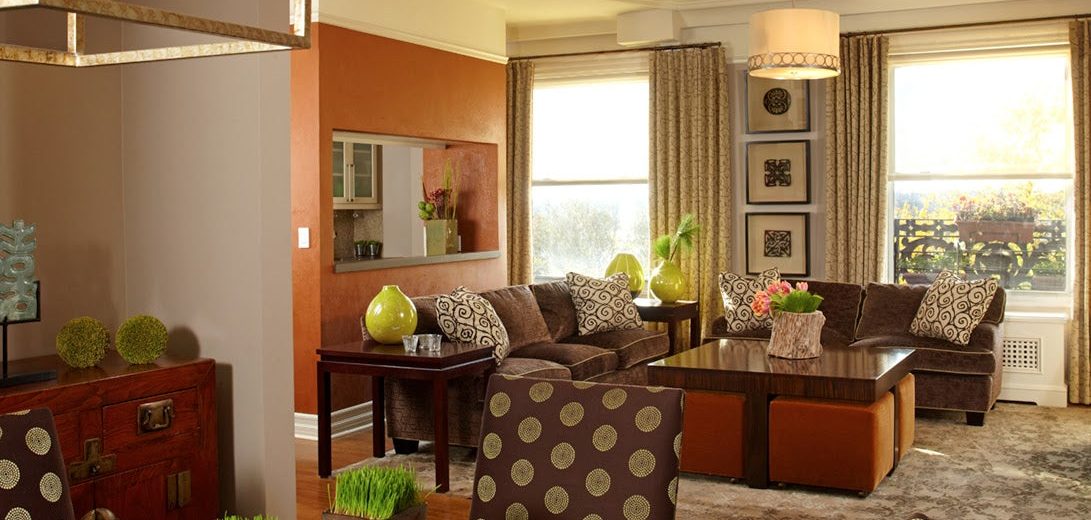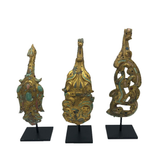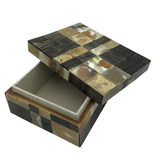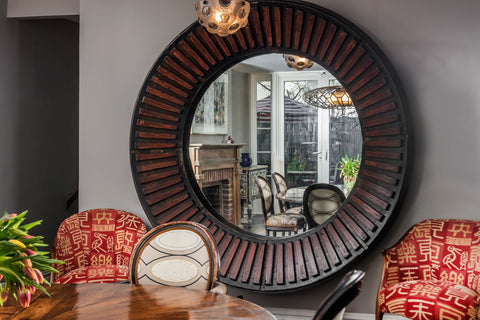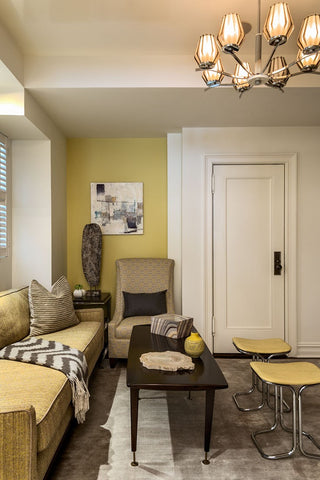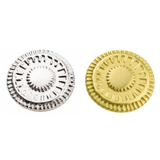Happy Earth Day, Fabulistas!
I could talk about Spring all day long. I find this time of year – pops of colorful budding flowers against a verdant background – endlessly inspiring. Naturally, Earth day falls in the Spring season, so I use this as a reminder to reflect on my responsibilities as an environmentally-conscious designer.
One of my most important design principles is sustainability—keeping spaces and design practices green and eco-friendly. Staying sustainable is really easy once you’re familiar with the basics, so I’ve decided to share with you the three Pillars of Sustainability . These pillars embody important key principles in understanding sustainability and how it impacts us and our environment.
The Three Pillars of Sustainability

Many people hear the words green and sustainability and immediately associate this with recycling their cans and bottles. While this is one important aspect of sustainability, the movement to be more environmentally conscious is quite extensive! All three of these pillars – in tandem – are important in creating a more sustainable environment, though some of these are often forgotten.
Pillar I: Environmental

This is the most recognized pillar of the three. When thinking about sustainability and how it pertains to our environment, we often think about air quality, water quality, resource integrity, carbon footprint, and ecosystems. Now let’s think about how this all comes into play in the world of interior design and home furnishings. There’s lots to consider! For all of the products in our homes we should ask:
- Where are they made? Were they made locally or overseas? Did it require an enormous amount of fuel to transport this item to me? Do the local laws support sustainable manufacturing processes? Are they Green Certified (LEED/EDGE, Green C Certified, etc)?
- What are they made from? Were forests wiped out so this piece of furniture could be made? Was it made from rapidly renewable resources? What other materials were used that could be harmful such as dyes and adhesives?
- How much waste did this create? Was this item made in an efficient and safe way to reduce its carbon-footprint? Or has the manufacturing of this item created lots of waste, both in landfills and waterways? Explore any manufacturing byproducts and how they handle them.
- Are there dangerous chemicals used in the manufacturing process? Are these chemicals harmful to the workers who made this? Will these chemicals off-gas in my home and be harmful to me, my family, my pets, and the environment?
There are so many important considerations! These are only just a few of them.
Pillar II: Economic
When considering how we can affect positive change for our Earth, we must recognize that it has to make cents (see what I did there?) too. People inherently want to do the right thing for the planet, but whether they can afford to make the environmentally conscious decision is largely based on whether they can afford that choice or not. When creating sustainable options, companies have to ensure that these options are not only solving the environmental problems they might otherwise create, but they also have to be economically rational. Make sure you’re keeping a close eye on your budget when thinking about greener materials and products.
Pillar III: Social
Human health, education, and environmental justice are all key parts in creating a sustainable environment. When considering how our home furnishings play into this pillar, think about… Who made this item? What conditions were they under when making this? Were the conditions dangerous to their health? Was the maker fairly compensated for their labor? Does the manufacturer support local communities? Thinking about a more sustainable Earth isn’t just limited to nature and the environment – we’re part of the environment too, and it’s important not to lose the Human aspect when considering our choices.
Robin’s Sustainable Strategies
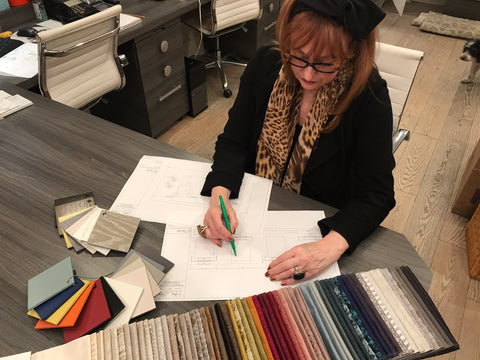
The three Pillars of Sustainability leave many questions open – and that’s on purpose! These are guidelines and a general framework. There are so many ways that each and every one of us can contribute to a sustainable lifestyle, and sometimes, that can feel overwhelming. The important thing is to start somewhere. Recognize that you can make a difference. Identify a few small steps that you can take to make the world a bit more green, and start with those! These are some of my favorite green strategies that I take into consideration in my design projects that work for all styles and occasions. We only have one Earth, and it’s our responsibility as design-lovers and citizens of the planet to keep it green and healthy!
Functionality is the Foundation
Functionality is an essential aspect of design, and it goes hand-in-hand with sustainability. When envisioning a room, it’s important to look at its spatial footprint as well as the individual needs of the people using that space. One of the most important parts of designing is understanding how a room is going to be used 99% of the time. Ask yourself: what pieces fit the space and enhance its primary function as a room (for example, if you have an extra bedroom and need a home office, consider designing the room so it functions more so as an office for your daily needs, rather than a guest room that you may only use once or twice a year)? I think this is so important because it brings a level of intentionality and longevity into the design process.
Style and aesthetics are centrally important in design, and equally important is to think about utility when carefully selecting furnishings for your home. When a piece has a deliberate function—when it belongs in the space— the overall design has a sense of longevity and timelessness, which is a remarkably sustainable practice; once you set up your room, any updates you’ll make will be minimal. When designing, I generally focus on the long-term goals of a space, which will prevent frequent updates and replacements. A piece with timeless style and functionality is the foundation of gracious and sustainable design! Think design that is long-lasting and generational.
Robin’s 3 R’s: Reclaim
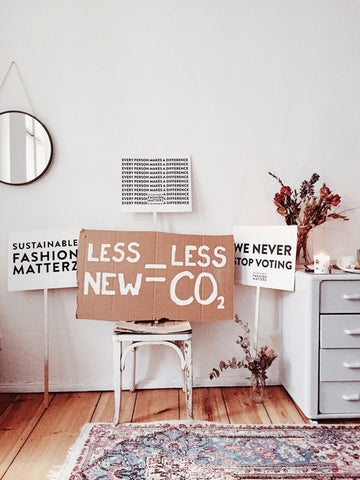
As you may know, I adore antiques and vintage home-furnishings! Every piece tells its own story infused with its own rich history. And there is also the added sustainable bonus to buying vintage and antiques for your home – they already exist and don’t need to be manufactured, using resources, creating waste, and so on, it’s inherently green since we’re reclaiming a piece that already had its carbon impact on the environment, and amortizing its “price per use” over time makes this a true investment. Nearly all of the vintage and antiques I source have a history of impeccable craftsmanship, so longevity is already part of the package. When it comes to vintage pieces, you’re often looking at one-of-a-kind items—they become uniquely yours, and how you use it adds to its history, making them all the more meaningful to your space.
Robin Says: “Vintage decorative objects tell a one-of-a-kind story, adding intrigue and personality to any space.”
Vintage touches work in so many design styles , from traditional to mid-century modern . Antique accent pieces can add an historic flare to a modern-styled space, while larger stately pieces may fit seamlessly into a more traditional-styled home. Toma Clark Haines is my Resident Expert in Vintage and Antiques . Feel free to check out our conversation where we discuss her foray into the world of vintage design.
Here are some examples of my designs that incorporate vintage and antique objects, furnishings, and of course, lighting!
In this fab entry foyer , I included a dramatic, polished chrome vintage chandelier to punctuate the space. Think medusa meets the modern age!
This oversized vintage mirror was the perfect addition to this eclectic dining room , bringing a touch of the outdoors inside.
With a vintage chandelier, coffee table, reupholstered stools and a pop of color, I gave this family room cool mid-century modern vibes.
Robin’s 3 R’s: Refresh
While designing a space from scratch is always an exciting project and milestone, I think many people are looking for inspiration to give an existing piece new energy. Refreshing a space with some ingenious sustainable hacks is one of my favorite ways to design. A great place to begin is to work with existing pieces. If you have a chair with great bones but the fabric is a bit outdated, reupholstering is a simple process that can create a dramatic transformation. There are countless eco-friendly and sustainably-manufactured fabrics to choose from, too! Refinishing wood furniture and refreshing its hardware is yet another way to make sustainable choices, while adding a custom touch. A simple new finish can instantly add some glam to your space, saving trees, shipping energy and money. Sounds like a win to me!
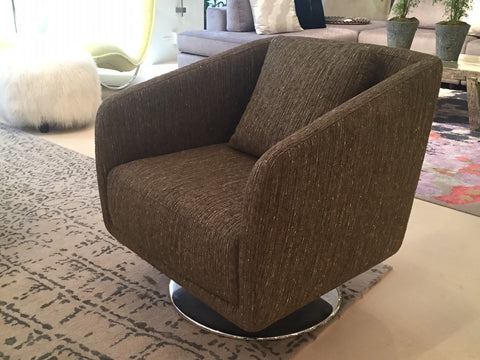

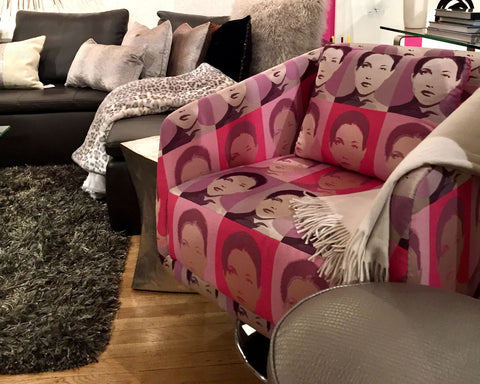
You’ve heard me say it before, but I love hardware ! It’s another fabulous way to completely transform your kitchen, bathroom, or any long-standing piece of furniture, to breathe new life into your space, and one of the most sustainable ways to refresh a piece of furniture you love – it’s jewelry for your pieces! I’ve written about hardware before, so feel free to check out that article for some tips and tricks on making the best impact with your hardware choices.
Robin Says: “A simple hardware switch can dramatically change a piece of existing furniture, giving it a sustainable refresh!”
Robin’s 3 R’s: Reimagine
Thinking sustainably is a practice that I’ve consciously cultivated over the years, and it begins by reimagining how I approach each aspect of design and I believe that understanding where a piece of furniture comes from is an essential first step. I always prioritize a high level of craftsmanship when specifying new furniture for my clients. When a piece is produced with care, using high-quality, sustainably-sourced materials and impeccable craftsmanship, it truly lasts for several lifetimes! Reimagining a design process that centers longevity and functionality helps create spaces that last and infuse confidence in your home for many years to come. I also try to select pieces that are made here in the US, which drastically reduce the carbon footprint related to long-distance shipping. Susan Inglis, my Resident Expert in Sustainable Design, offers some fabulous advice on reimagining the design process as one that’s holistically sustainable .
Giving Back with One Tree Planted

The interior design and home furnishings industry uses a lot of trees! The environment is important to me, and I take pride in featuring sustainably sourced furniture that’s mindful of the planet we live on. At Robin Baron Design, we are a proud partner of One Tree Planted , an amazing organization focusing on responsible reforestation. Every time someone makes a purchase from my site, you’re helping to support the planting of a new tree in much needed regions around the world, creating local jobs in the process, promoting long-lasting sustainability.
These three Pillars of Sustainability keep design eco-friendly and make our Earth greener. My philosophy is to create beautiful and meaningful spaces for the people who use them, a little bit of green goes a long way. Keep in mind, there’s no one way to take a sustainable approach when designing your home, just keep the pillars in mind. Use them as your guide, and feel free to build on them! Share your sustainability practices in the comments below! I’d love to hear your take on green design.
XOXO,
Robin

